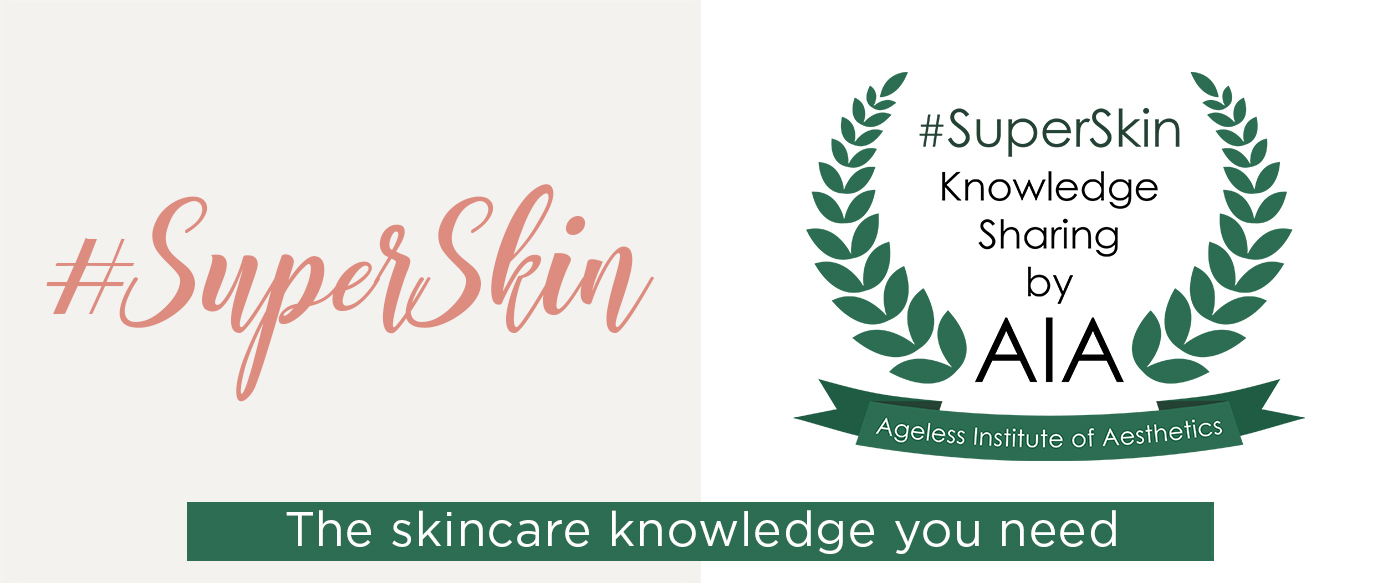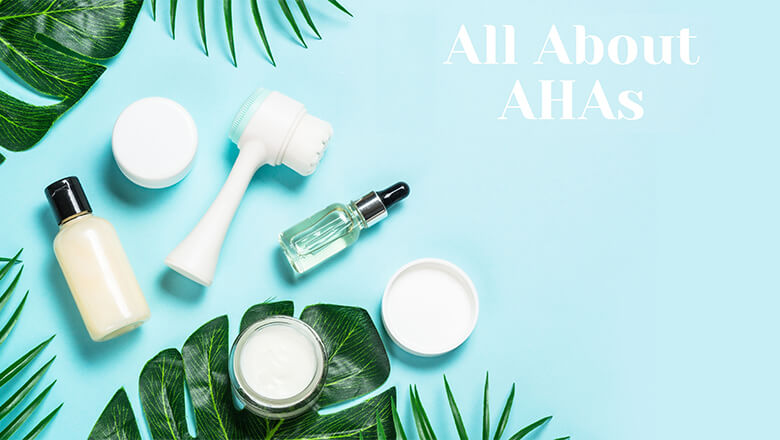
Ahas / Alpha Hydroxy Acids

Today’s Aha moment (pun intended) is to know more about these miraculous little acids that make our skin feel smooth, nourished, brighter, the benefits go on and on
We all have heard and used and even recommended AHA products but somehow understanding different AHAs and their unique benefits to our skin is still confusing. So, let’s deconstruct this amazing ingredient family and know more about each kind of acid.
WHAT IS A AHA
AHA is actually an abbreviation of Alpha Hydroxy Acid, which are naturally forming acids found in fruits, nuts, vegetables and even milk. They have several benefits for dietary nourishment as well as when used topically on the skin.
To know how AHAs help our skin, we will have to get to know our skin a bit better - we have skin cells that are held tightly together with skin glues, which as the skin cells go dead and layer up towards the top, clog the surface and form congestion that is difficult to remove. What AHAs do is melt or dissolve this glue that is holding together the dead skin and so allows for a quicker and deeper exfoliation.
Why is an AHA exfoliation so important?
We have the epidermal layer (which is the topmost superficial layer we see and touch) and the dermal layer (which sits below the epidermal layer) and is the living part of the skin with blood vessels, proteins like collagen,elastin and other skin organs like sweat and oil glands etc. So for any good ingredients to penetrate to this living layer of skin, it needs to be able to bypass the dead layer on top.
Since all skin cells are kept together with a glue-like substance that keeps them bonded to each other like bricks in a wall, as skin cells start dying, this glue prevents these dead skin cells from effectively being removed (and new healthier skin from emerging). While physical scrubs and exfoliators can scrape away dead skin, they can’t do much about this rigid glue. AHAs can not only penetrate this glue but effectively dissolve it, making sure that active ingredients can penetrate to the living cells and stimulate collagen rebuilding, melanin removal and other benefits.
Let’s take a look at the different AHAs and how they help our skin
GLYCOLIC ACID

Got from sugarcane, this is the most commonly used acid due to its ability to work at different concentrations and purposes.
Glycolic acid is great to clean out the pores and unglue dead skin. It also can penetrate deep within to increase collagen and have skin firming benefits. It is also used to control sebum and prevent acne breakouts.
Skin type recommended – all skin types except sensitive skin
LACTIC ACID

Considered to be a mild acid, good even for sensitive skin, this acid is the natural sugar in milk called lactose.
What is it good for?
Lactic acid is great to break down the dead skin matrix and is used specifically for skin exfoliation, surface discoloration, and uneven skin tone. Due to its non-irritable nature, it is recommended as the go-to acid for sensitive and irritable skin types.
Good for – dry, dehydrated, and sensitive skin
CITRIC ACID

Citric acid-like its name is found in citrus fruits like lemons, limes, pineapples, grapefruits, tomatoes, and even vegetables like broccoli, carrots, etc.
What is it good for?
Citric acid is great for cellular turnover and removal of fine lines, pigmentation and discoloration. Citric acid works best to cleanse pores and rebalance pH and is popular in toners and astringents. It is considered to be a stronger acid and so after effects (if used incorrectly) could happen like mild itching, burning, or redness. So care must be taken when using this acid.
Good for – oily, acneic, combination, breakout-prone skin
MALIC ACID

Extracted from apples and also found in pears, it’s popularly used in foods and beverages.
What is it good for?
Malic acid is mild and has hydrating benefits. It’s a good balancing acid as it helps with mild exfoliation as well as to maintain overall tone and texture. Known as a good antioxidant; it forms a supporting role to other acids or skincare ingredients to keep your skin healthy
Good for – All skin types
MANDELIC ACID

A newer Aha used in skincare, this acid is got from bitter almonds and has great exfoliating as well as antioxidant benefits
What is it good for?
Mandelic Acid is great for skin hydration, rejuvenation, and getting an even skin texture. Due to its gentle exfoliation properties, it is recommended for sensitive skin as well. Another great use for mandelic acid is to treat hyperpigmentation and spots of discoloration
Good for – sensitive, acneic, oil-prone or combination skin, hyperpigmentation
TARTARIC ACID

Just like its name, this tart or sour acid is found in plants like grapes, apricots, tamarinds, etc. It is great to exfoliate all kinds of skin textures and is mostly used in combination with more penetrative acids like lactic or glycolic to help them work deeper into the skin by paving a smooth exfoliated pathway
Good for – dehydrated, dry, sensitive skin
AHA USAGE TIPS
Do’s - AHAs work best with Vitamin C, so combining them into your skincare regime is a great suggestion to get a boosted result
Don’ts - Do not combine AHAs with Retinol or VIT A products as both work to exfoliate skin and so could cause irritability and skin reactions
AHA are water-soluble acids so they mix well with water to dissolve dead skin. Hence, including an AHA cleanser in your routine will ensure a cleaner smoother skin texture – especially if you have dry or dehydrated skin
Pro tip - Since AHAs cause skin sensitivity, sunscreen is a must while using them.


HOW TO CHOOSE THE BEST AHA FOR YOU
The secret to making AHAs work for you is to select not just the right acid but also the right percentage of acid you are using. Remember penetrative acids like lactic and glycolic acids in higher concentrations can be too potent and react within your skin in undesirable ways
Look for AHAs in
• Cleansers /Facewashes
• Toners
• Moisturizers / Skin gels/ Lotions
• AHA pads
1. To start with, try including AHA Cleansers or toners and see how receptive your skin is to them. OTC moisturizers, lotions, and creams containing AHAs are also safe to use as they have a maximum of 4% concentration of any AHA
2. Cosmeceutical products (which are medical grade and Dr prescribed) can have higher concentrations but with guided advice, they can show remarkable results as well.
3. The deepest concentration of AHAs are left to peel treatments – as they are done by trained medical staff, the amount of time they remain on your skin, various combinations with other antioxidants and vitamins, skin concerns to be met, etc. are all important factors that decide the type and concentration of AHAs used. These should be left to professionals and should not be tried at home.
AHA works best for
1. Post Inflammatory Hyperpigmentation – marks and spots left as a reaction to inflammation that turns into dark pigmented spots are usually termed as PIH, these spots can be helped to lighten and reduce with the right AHA
2. Acne
3. Dullness
4. Dehydrated Skin
5. For instant glow
Some potential disadvantages of an AHA are May cause irritability as they are potent and active in nature
• Makes skin sun-sensitive after use so SPF is a must




